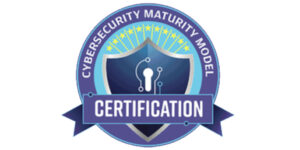Introduction
The digital era has created a plethora of opportunities for businesses all around the world. However, increased digitization introduces a plethora of cybersecurity threats that might bring even the most durable systems down. Cybersecurity risk management isn’t simply a good idea; it’s a legal duty. Here’s why it’s important and how businesses can benefit from it: The increasing reliance on technology, as well as the interconnection of our digital world, has increased the relevance of cybersecurity risk management for businesses. As cyber attacks become more complex and widespread, firms must establish effective ways to safeguard their sensitive data and systems. Companies may better protect their operations from cyberattacks by proactively identifying and assessing potential threats, developing suitable mitigation measures, and frequently monitoring and updating their security policies. Finally, investing in cybersecurity risk management is about more than simply preserving a company’s financial line; it’s also about protecting its reputation and keeping customers’ trust.
Cyber Threats’ Pervasiveness
Cyberattacks are no longer limited to large corporations and financial institutions. No firm, no matter its size or industry, is immune to ransomware attacks that cripple cities or data breaches that expose the personal information of millions. The time between discovering a vulnerability and hackers exploiting it has shrunk dramatically, often to days.
Why are traditional approaches insufficient?
Previously, enterprises relied on frequent vulnerability scans. They would typically run these scans every quarter, as was the industry standard. This method would provide them with a sense of their current cyber health. This strategy, however, falls far short in today’s fast-changing digital landscape. Consider this: every 20 minutes, a new Common Vulnerabilities and Exposures (CVE) entry is registered, rendering earlier scanning approaches obsolete.
The Importance of Constant Vulnerability Scanning
Continuous vulnerability scanning has evolved from a luxury to a requirement. With over 25,000 CVE vulnerabilities disclosed in only one year, the risks during the intervals between standard scans are unsustainable. This type of monitoring provides constant oversight of IT infrastructures while utilizing automation to lessen the burden on IT staff. This ensures that threats are detected and dealt with as quickly as possible, effectively barricading potential entry sites. As a result, businesses must take a more proactive approach to cybersecurity by deploying continuous vulnerability scanning. This continuous monitoring enables real-time vulnerability detection and mitigation, allowing enterprises to remain ahead of emerging threats. Organizations can detect and patch gaps before they are exploited by bad actors by scanning for vulnerabilities on a continuous basis. Constant vulnerability scanning also gives enterprises valuable insights into their entire security posture, allowing them to make informed risk mitigation decisions. Continuous vulnerability scanning is no longer a luxury in today’s ever-changing threat landscape; it is a requirement for any firm serious about securing its digital assets.
Adoption of compliance standards is slow.
Historically, regulatory frameworks have lagged behind technological advances. Many firms still rely on archaic requirements such as an “annual penetration test” or a “quarterly vulnerability scan.” These were developed at a time when cyber threats were seen as prospective concerns rather than certain results. Organizations must view cybersecurity measures as more than just compliance checklists but as essential components of their operating fabric. Continuous monitoring is no longer an option, with threats emerging on a daily basis and cloud services, APIs, and applications being changed on a frequent basis. The banking industry is one example of sluggish compliance standard adoption. Many banks have been hesitant to implement the Payment Card Industry Data Security Standard (PCI DSS), a set of rules designed to ensure secure credit card data handling. Despite the ongoing fear of data breaches and financial loss, some institutions have been hesitant to invest in the required technology and resources to meet these standards. This sluggish adoption not only jeopardizes customer data but also exposes these firms to governmental scrutiny.
Continuous attack surface monitoring is a must.
Your organization’s attack surface is not constant. It is constantly evolving as new devices are added, services are made available online, and applications are changed. Continuous attack surface monitoring keeps businesses up to date on new vulnerabilities. Legacy tools, whether external, internal, or cloud-based, usually fail to deliver particular insights or distinguish across threat vectors. Modern solutions should provide a whole business context, including cloud integrations and network changes. for all financial institutions. Continuous attack surface monitoring is required not only to meet PCI DSS regulations but also to discover and mitigate potential vulnerabilities and threats. By scanning and monitoring their systems on a regular basis, banks can detect any unauthorized access or suspicious activity, ensuring the security of consumer data. Furthermore, this approach assists financial institutions in remaining in compliance with regulatory standards and demonstrating their dedication to the security of sensitive information. Finally, continual attack surface monitoring is necessary for banks to protect against data breaches and retain consumer trust.
Balanced Frequency and Efficiency
Continuous does not always mean indefinite. Continuous scanning of systems can overwhelm teams with alarms, including many false positives. This can impede operations and complicate threat prioritization. Modern security applications, such as Intruder, bypass this issue by launching scans automatically when network changes are detected, ensuring system performance while lowering breach windows. While constant attack surface monitoring is critical, it can be argued that focusing too much on it may take resources and attention away from other security measures, thereby leaving vulnerabilities in other sections of the system.
Taking Compliance to the Next Level
It is dangerous to base scanning frequencies only on standards such as SOC 2, ISO 27001, HIPAA, or GDPR. While these guidelines give advice, they frequently fail to reflect today’s ever-changing threat landscape. Companies must go beyond basic compliance to properly decrease risk. In today’s evolving threat landscape, relying simply on established criteria for scanning frequencies such as SOC 2, ISO 27001, HIPAA, or GDPR poses a significant risk. While these guidelines provide useful direction, they frequently fall short of addressing the ever-changing nature of security risks. To fully protect their systems and data, businesses must go beyond basic compliance and take a more complete approach to risk mitigation. This requires actively recognizing and anticipating emerging risks, putting in place strong security measures, and cultivating a culture of proactive defense. Organizations can strengthen their security posture and effectively minimize possible threats by going above and beyond the basic criteria required by standards.
Conclusion
Threats to cybersecurity are evolving at an unprecedented rate. Traditional risk management methods are out of date. In 2023, continuous monitoring paired with effective cybersecurity risk management will be the gold standard for businesses. It’s not just about protecting your company from outside threats; it’s also about safeguarding its reputation, reliability, and, eventually, its future. To recap, while standards such as SOC 2, ISO 27001, HIPAA, and GDPR provide a strong framework for security measures, they should not be the exclusive focus. Relying entirely on these criteria may give you a false sense of security and cause you to overlook other important parts of a comprehensive security strategy. Companies must constantly analyze and change their security procedures to match the ever-changing threat landscape. Organizations can better protect their systems and data against potential vulnerabilities by going above and beyond compliance.





